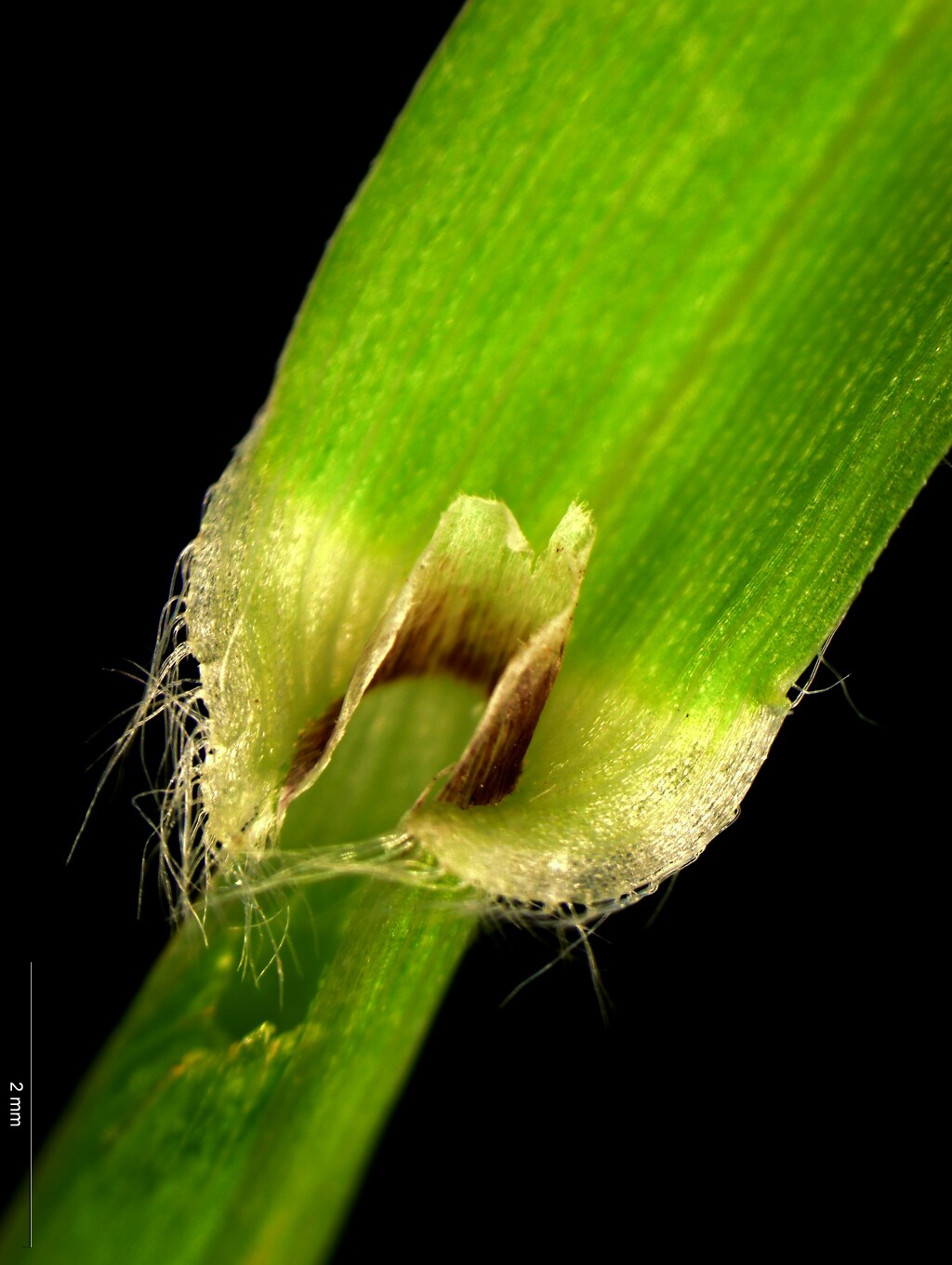Anthoxanthum odoratum
L. Sweet Vernal-grassTufted or shortly rhizomatous, coumarin-scented perennial; culms erect, to 80 cm high (rarely more). Leaves glabrous to sparsely hairy, smooth to scabrous; blade flat, to 20 cm long and 2–8 mm wide; ligule truncate, 1–5 mm long. Inflorescence a moderately dense, spike-like panicle (sometimes slightly expanded at anthesis), 2–10 cm long; lower glume ovate, 3–5 mm long, acute, sparsely hairy, upper glume lanceolate, 6.5–10 mm long; sterile lemmas 3–4 mm long, oblong, truncate, the membranous tip bilobed, firmer below and covered by semi-appressed, tubercle-based coppery hairs, the awn of the lower straight, 2–4 mm long, inserted just above midway, the awn of the upper stouter and dark, geniculate, 6–9 mm long, inserted near base; fertile lemma c. 2 mm long, ovate; palea equal to lemma. Flowers mainly Sep.–Jan.
Wim, GleP, Brid, VVP, VRiv, MuF, GipP, OtP, WaP, Gold, CVU, GGr, DunT, NIS, EGL, EGU, WPro, HSF, HNF, OtR, Strz, MonT, HFE, VAlp. Naturalised in all States. Also southern Africa, the Americas, New Zealand. Common throughout cooler parts of the state in open grassy situations including pasture and native grasslands.
Walsh, N.G. (1994). Poaceae. In: Walsh, N.G.; Entwisle, T.J., Flora of Victoria Vol. 2, Ferns and Allied Plants, Conifers and Monocotyledons, pp. 356–627. Inkata Press, Melbourne.
 Spinning
Spinning




